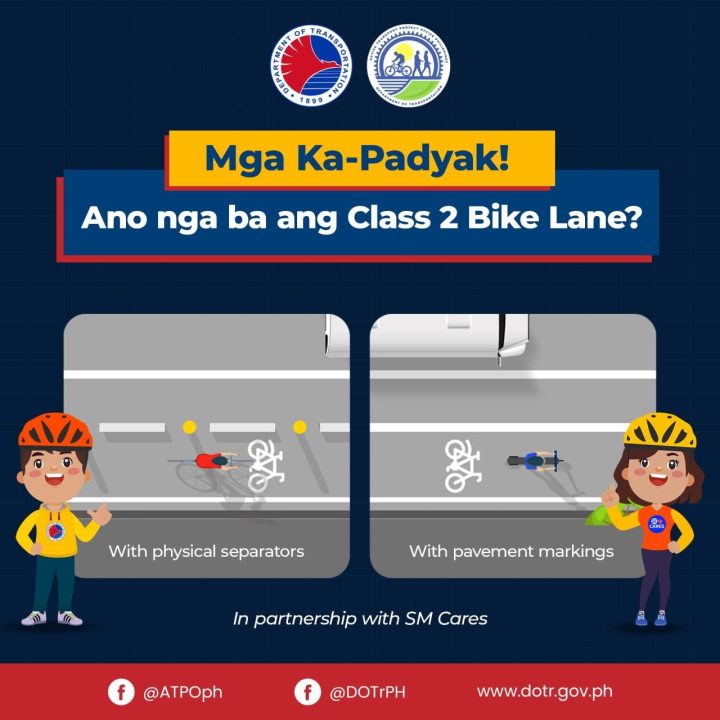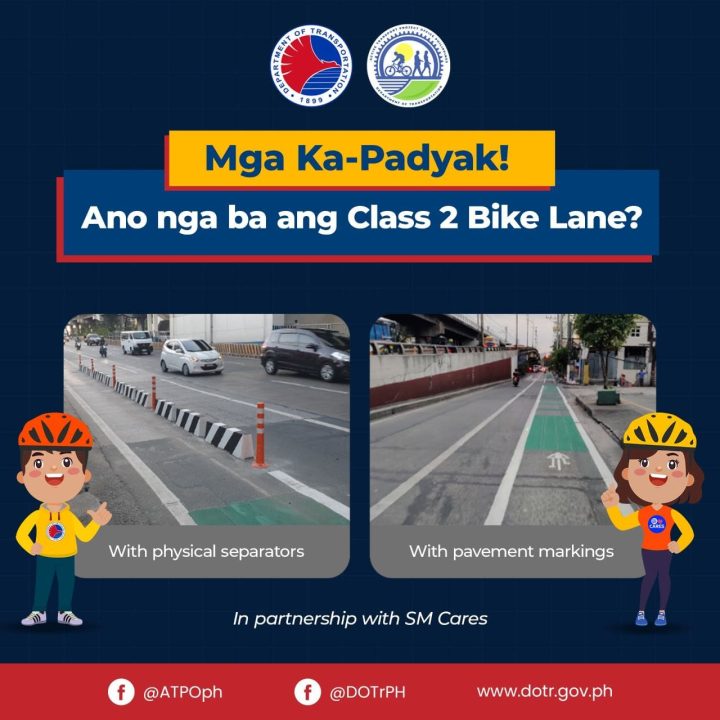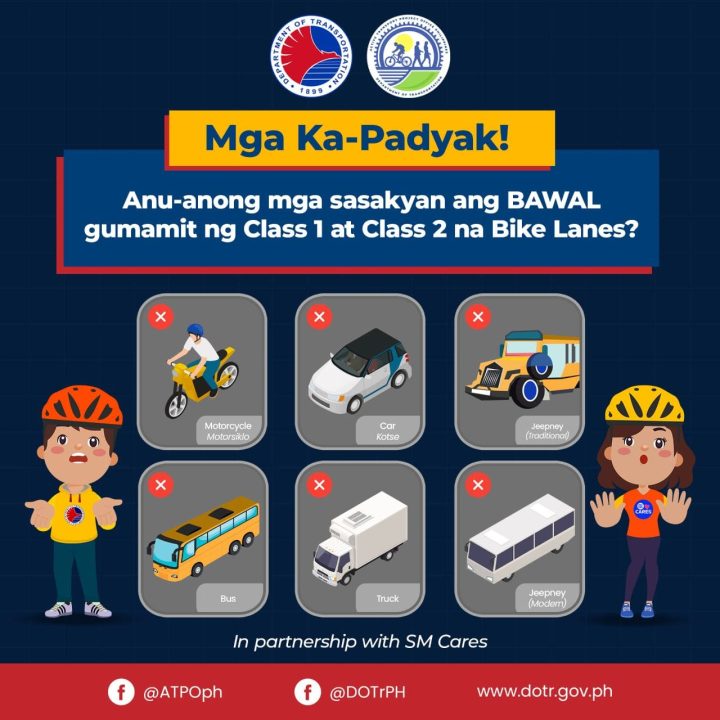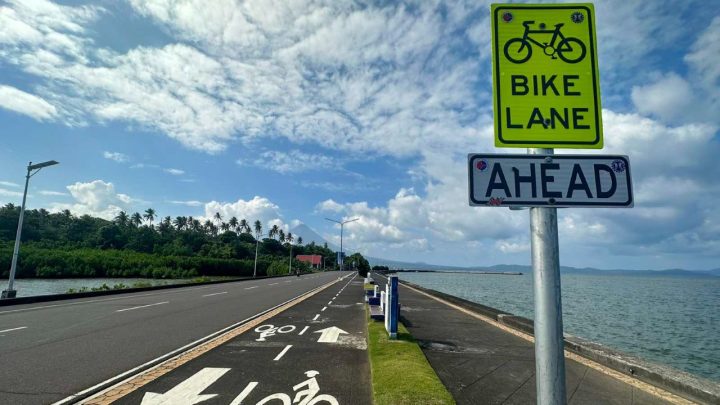
Bike lanes: we all see them, and we see some use them, but how many of us really know or are at least aware that they have different classifications? That, and despite us knowing what vehicles are not allowed, there are also more than just two-wheeled bikes that are allowed to use them. Surprised? Let’s work on spreading the info and knowledge, yes?
A lesson on Bike Lane Classifications and vehicles that can and cannot use them
Table of Contents
As we mentioned – and likely to the surprise of many – there are two classifications or types of bike lanes scattered across not just Metro Manila, but around the Philippines. Both types are differentiated from each other by their location, and that’s what we’ll have a look at now.
Class 1 Bike Lanes

Photo: Active Transport Project Office – Philippines

Photo: Active Transport Project Office – Philippines
For those who might never have noticed, some bicycle lanes can be found outside on-road lanes. These are the ones that we can see are demarcated by paint signifying that there is a bicycle lane along the sidewalk or pavement. Normally, these lanes are also separated from the walking public by barriers, posts, or bollards along with the visible markings on the surface.
Class 2 Bike Lanes

Photo: Active Transport Project Office – Philippines

Photo: Active Transport Project Office – Philippines
For many if not all of us, this is what we more commonly see. Whether along EDSA, Commonwealth, Julia Vargas, and many other major and interior roads, the Class 2 Bike Lane is utilized more than the Class 1 lanes.
These are the bicycle lanes that, much like the former, are separated by paint lines, bollards, and even concrete dividers from motorized vehicles, but the main difference is that these are more of makeshift bike lanes. In the interest of giving space for active transport users, these lanes were separated from already-existing lanes for motor vehicles and is right along the road.
While the dividers aim to make them safe, we would rather more Class 1 lanes be made available, but we make do with what we have.
Who are ALLOWED to use Bike Lanes?

Photo: Active Transport Project Office – Philippines
Of course, two-wheeled bicycles are allowed on both Class 1 and 2 Bicycle Lanes; that goes without saying. But for everyone’s information, two-wheeled electric-powered scooters, electric-powered 3-wheelers or tricycles, and electric unicycles are also allowed to use these lanes. Generally, the only vehicles allowed to use the Bike Lanes are those that can go at a maximum of 25 km/h and weigh less than 50 kg.
It must also be said that some electric vehicles of the two- and three-wheeled kind need to be registered, and that the use of some of these may also require a valid Driver’s License. That said, you can consult our Light Electric Vehicle Registration guide to find out if yours needs one or both.
Who are NOT ALLOWED to use Bike Lanes?

Photo: Active Transport Project Office – Philippines
Moving on to the vehicle types that are not allowed to use either of the Bike Lane classes, these include motorcycles, cars, jeepneys whether traditional or modern, buses, and trucks of any size.

Photo: Active Transport Project Office – Philippines
The MMDA as well as elements of the various local governments that have Bike Lanes in place continue to enforce the laws that govern their use. After all, we do have National Policies that look out for the safety of those who prefer active transport. The Department of Transportation also has a pretty grand plan for EDSA, Metro Manila’s main thoroughfare, and how to make it safer and more accessible for active transport users and pedestrians alike. For starters, Quezon City has also bared its plans for the same.
We always say “Sharing is caring”, and it is. Of course, our ability to share must be bolstered by our knowledge of what we should share, and with whom. So go ahead, do feel free to share this, too. Sharing is caring, and knowledge is power.


